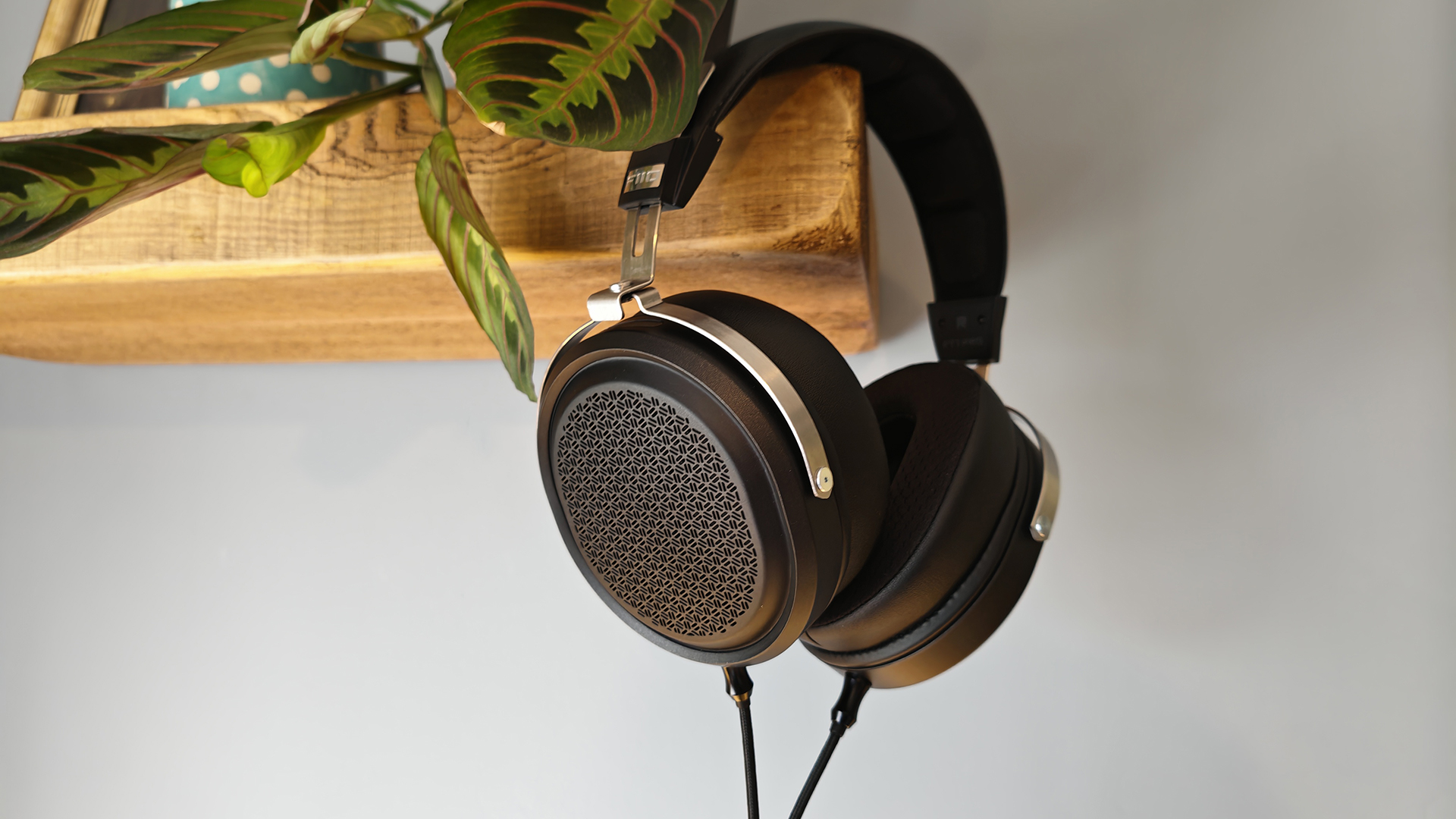How 5 digital artists used Z by HP workstations to collaborate across mediums and geographies
How music video Synchronize came to life, fuelled by global creative talent and the latest technology.
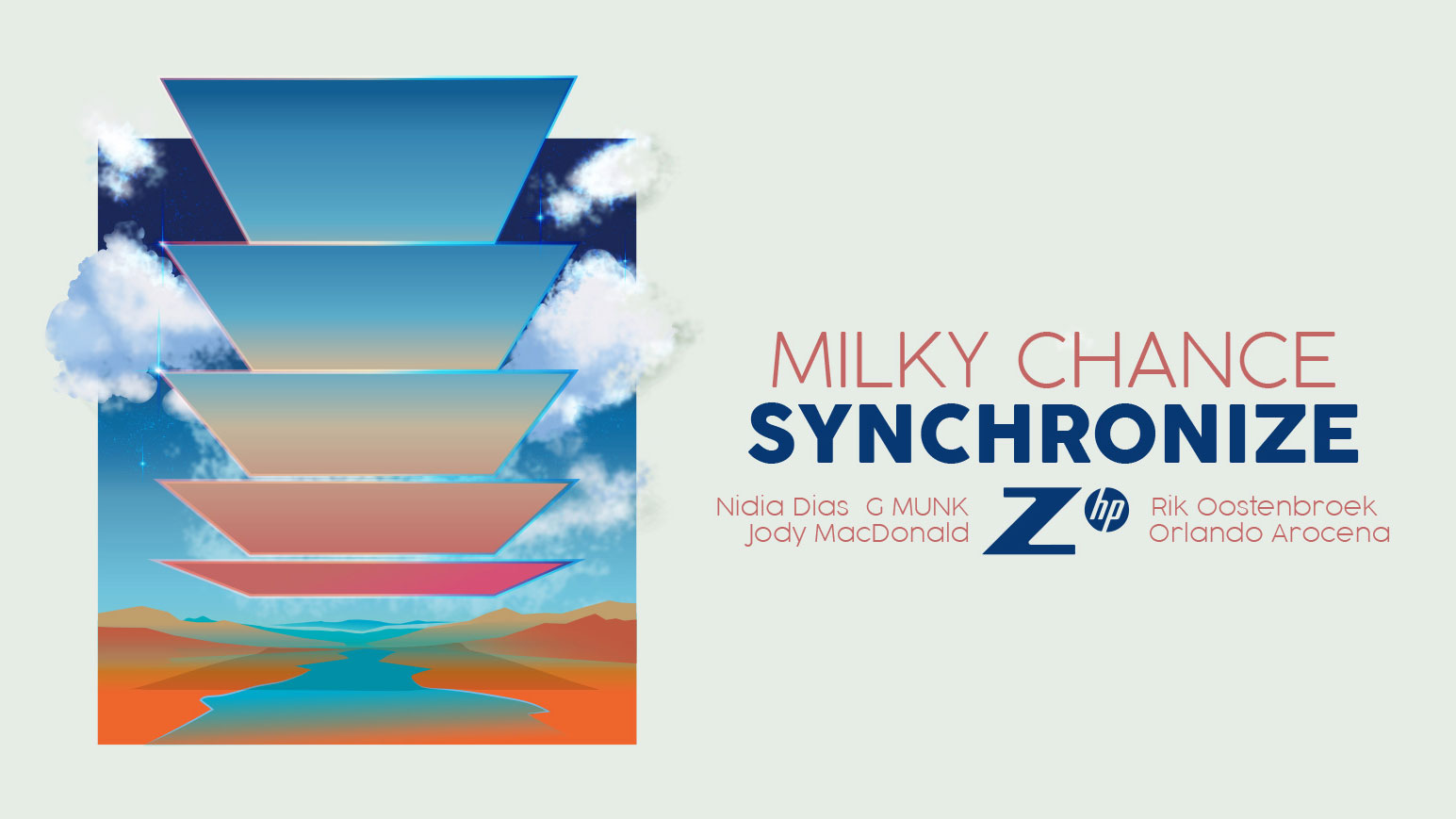
‘Synchronize’ may be the title of the synth-driven dance anthem by Alt-pop German rock duo Milky Chance, but it also speaks to the creative process behind the making of the new music video for the track (below).
The piece was created by five innovative digital artists, Orlando ‘Mexifunk’ Arocena, Bradley G Munkowitz aka GMUNK, Nidia Dias, Jody MacDonald and Rik Oostenbroek, all of whom are Z by HP global ambassadors and are provided with product and payment from HP.
They brought their creative inspiration together remotely from different corners of the world and different mediums – visual effects, design, vector art, 3D computer graphics, illustration, and cinematography – to produce a singular vision blending computer-generated imagery and live-action cinematography.
A visual journey
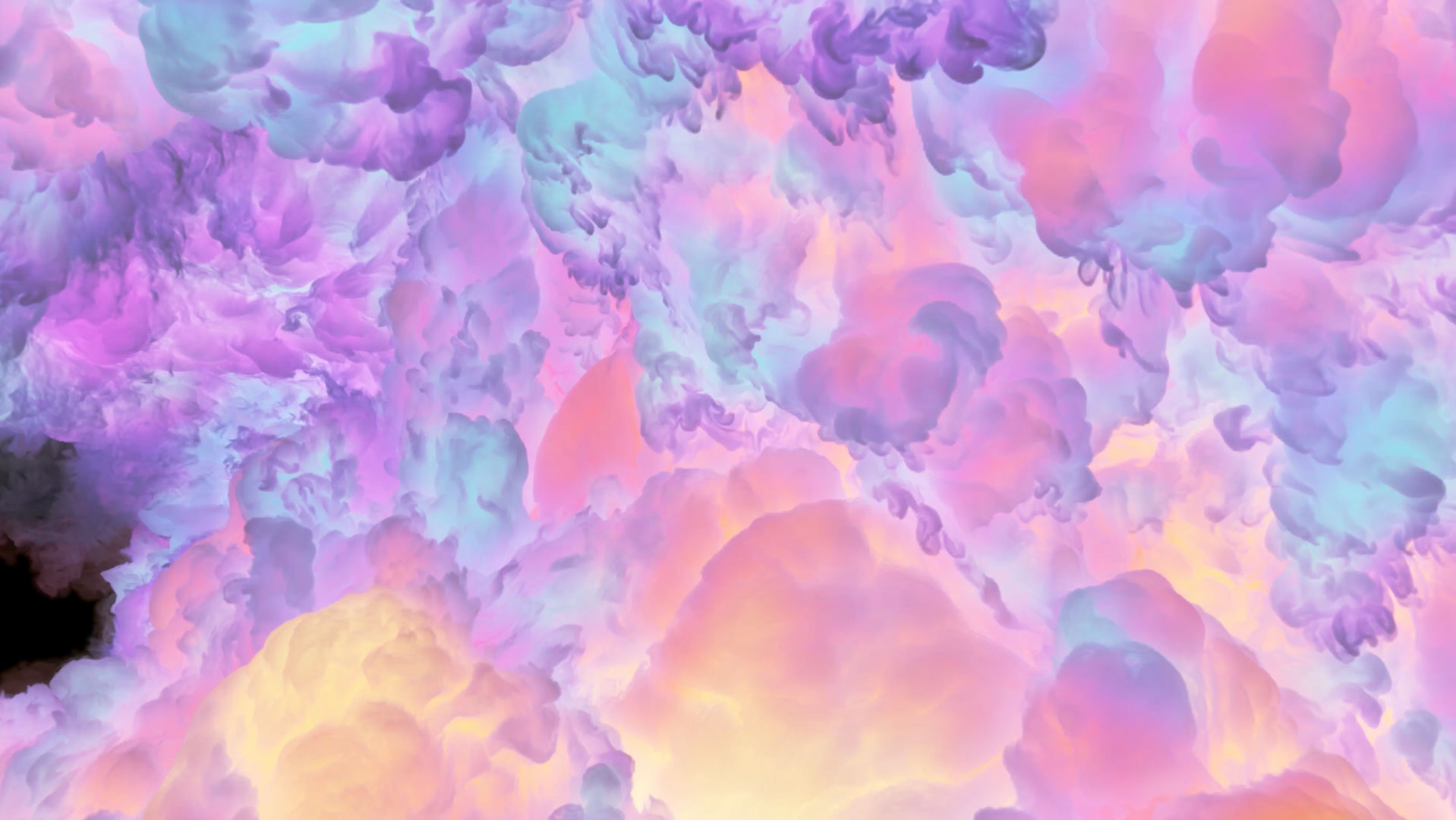
With access to the latest generation of Z by HP desktop workstations, the artists were challenged to explore new mediums and techniques to realise their individual visions, and then fuse them into a cohesive, crystallised whole. The result is a visual journey through hyper-real landscapes and lushly layered visuals synchronised with the track’s rhythms. The stunning imagery was created using 3D simulations and custom assets, with real-time 3D and advanced VFX tools.
To kick off the project, each of the five artists listened to the track to inspire their own visual interpretation of the music and lyrics, which they would then realise by exploring new techniques enabled by the rigorous performance and robust capabilities supported in Z workstations.
Real-time rendering
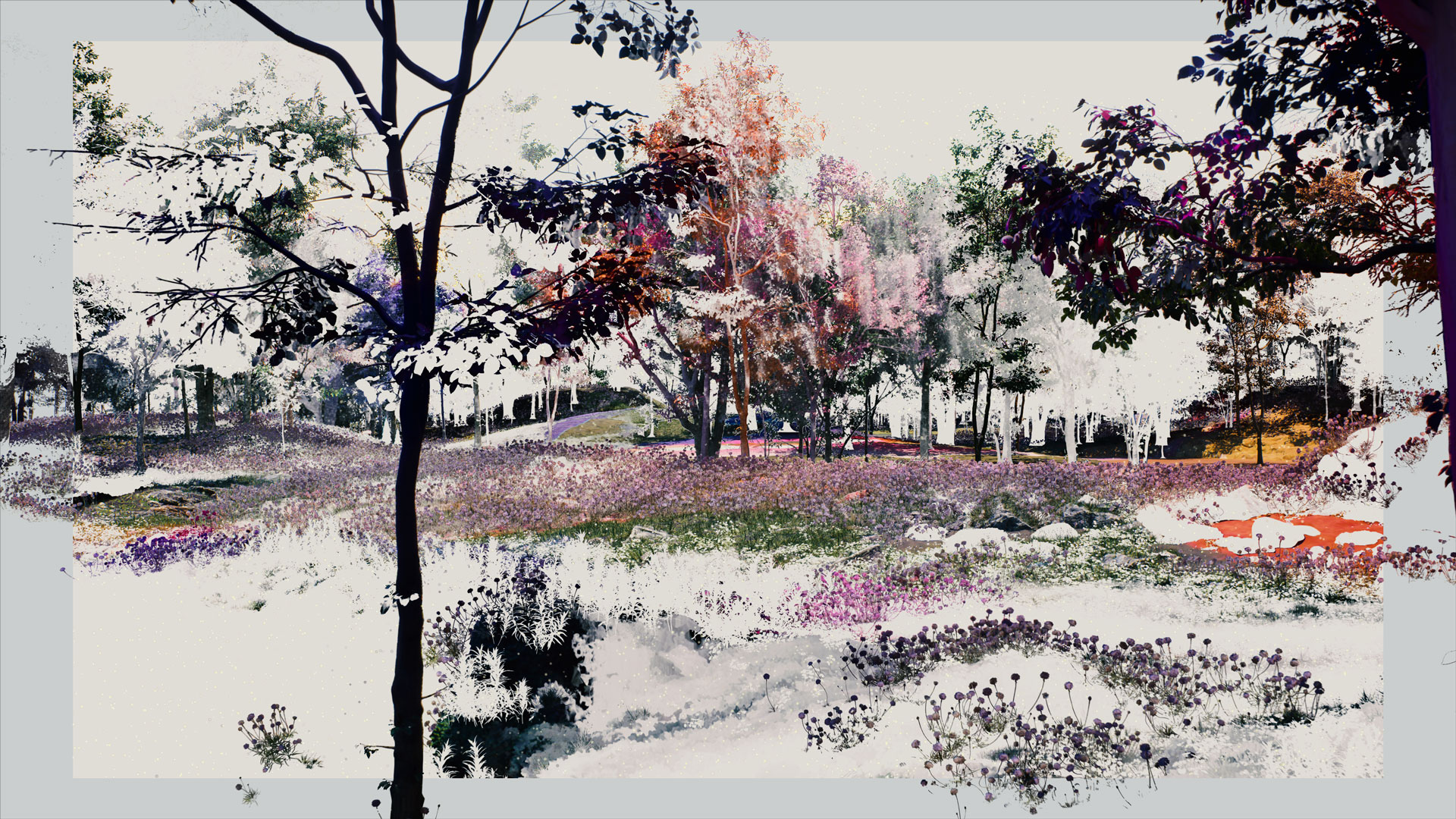
The live-action footage shot by Jody laid the foundation for the project. Working on HP Z8 Fury desktop workstations, Nidia, GMUNK and Rik then took inspiration from those formations and palettes and dove into the creative sandbox to take the visuals to another level.
Director Nidia, working out of her home base in Portugal, used this project to make her first foray into interactive real-time rendering using Epic Games’ Unreal Engine. She worked in-engine to combine rich digital landscapes with camera moves where everything was shaking, moving and changing over time – combined with assets that had 8K textures.
“Seeing that I could experiment and add as many trees and rocks, and as much water as I wanted using Unreal with the power of this workstation just unlocked so much for me,” she said. “I was able to create this massive landscape as a wide shot or go in very close up to see detail on rocks and water – so quickly, that’s the big win.”
Another win was that the computing power allowed her to experiment without fear. “In the past, I’ve felt frustrated when I’ve had to redo shots I’ve tried that didn’t come out as I expected because rendering took so long it broke the flow. With my new desktop, it was super fast to render in Unreal. It makes it easier to experiment knowing it’s ok to fail.”
Physical simulations
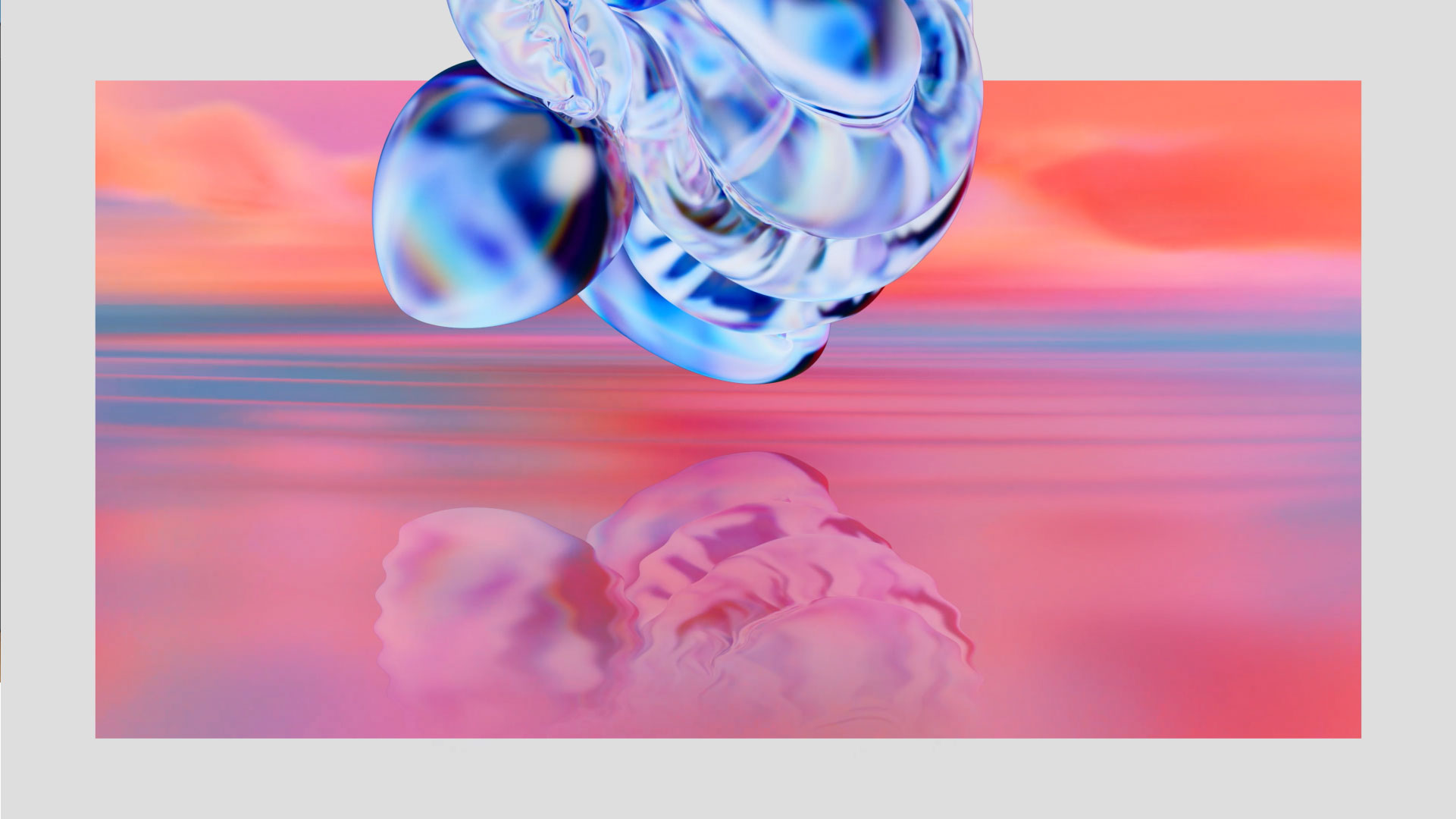
For the digital artists GMUNK and Rik, visualising the music started with responding to the movement and forms that were beginning to take shape through the footage and digital landscapes – from Berkeley, CA and The Netherlands, respectively.
Rik noted that the song spoke to him in textures and colours. “I envisioned bringing it to life in a fun moving-image way using waves and clouds and elemental things coming together to form a new visual reality.”
He took the opportunity of having the Z8 Fury to experiment with physical simulations on the project. “I had the crazy idea of doing smoke, clouds, water simulations, and all of these things that I’ve never done before, and it was great not to have to worry about hardware limitations. The Z8 Fury is hardware that supports your ambition.”
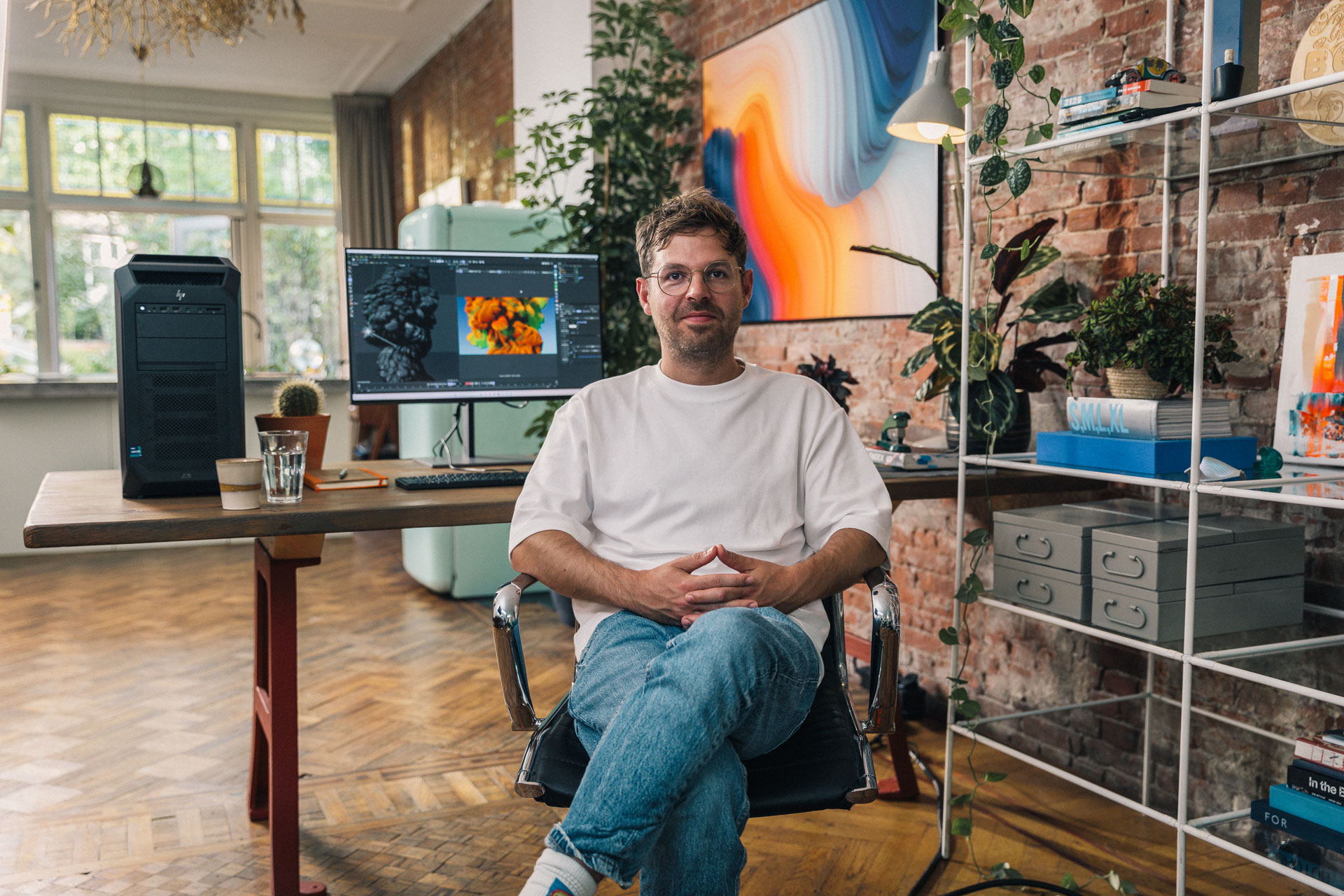
The capacity of the Z8 Fury – up to 56 cores in a single CPU, up to 2 TB of DDR5 memory, 136 TB of storage, and up to four high-end GPUs – enables artists to run multiple compute-intensive digital content creation tools simultaneously without slowing down. On this project, Nidia, GMUNK, and Rik were using Z8 Fury desktop workstations each configured with a 36-core Intel® Xeon® W9 CPU, 265GB of RAM, 7TB of storage, and 2 NVIDIA RTX™ 6000 Ada GPUs.
Rik explained, “With this system, I can run multiple software packages at the same time. Often I render something in Cinema 4D and need to take it to After Effects or Photoshop to refine it, so being able to run these tools side by side helps me work more interactively and get direct feedback.”

With the added hardware boost, GMUNK also gravitated toward simulations. “It’s fun to have this power in your hands. All of a sudden you’re rendering things five to ten times faster. The power of this machine is just world-class.”
He harnessed that power to create colourful cloud sequences using EmberGen, real-time fluid simulation software. He rendered his heavy simulations using the Maxon GPU renderer Redshift, with the Z8 Fury enabling him to run massive 225 million voxel sims that were still very interactive. “I can see exactly what I’m doing. It’s extraordinary to have this kind of computing power at my fingertips.”
Fluid workflows

While each artist experimented and explored their individual visions, they continually built on each other’s work to create a cohesive vision. “Through cross-pollination, we branched out and mixed and matched schemes and ideas and forms. Things were building and deconstructing and piecing back together constantly. It was a very organic process,” said GMUNK.
Nidia said, “The fact that we could quickly test, iterate, render and colour grade on these machines allowed us to show, review, and progress much faster – not only individually, but as a team.”
Looking back at past projects these Z ambassadors have worked on – including the Milky Chance music video, GMUNK noted, “We use these projects to learn, to push ourselves to be uncomfortable. We find our way in the process because the power of the Z workstations makes it all fluid. The power makes it so gratifying. We just harness the energy we’re given and run with it.”
Learn more about this exciting collaboration by watching the behind-the-scenes making-of-reel (above). Visit Z by HP online to learn more about how these workstations can help you realise your creative vision.
Intel, the Intel logo, Core and Xeon are trademarks of Intel Corporation or its subsidiaries in the U.S. and/or other countries. NVIDIA, the NVIDIA logo, and NVIDIA RTX are trademarks and/or registered trademarks of NVIDIA Corporation in the U.S. and other countries.
© Copyright 2024 HP Development Company, L.P. The information contained herein is subject to change without notice. The only warranties for HP products and services are set forth in the express warranty statements accompanying such products and services. Nothing herein should be construed as constituting an additional warranty. HP shall not be liable for technical or editorial errors or omissions contained herein.
Daily design news, reviews, how-tos and more, as picked by the editors.

The Creative Bloq team is made up of a group of art and design enthusiasts, and has changed and evolved since Creative Bloq began back in 2012. The current website team consists of eight full-time members of staff: Editor Georgia Coggan, Deputy Editor Rosie Hilder, Ecommerce Editor Beren Neale, Senior News Editor Daniel Piper, Editor, Digital Art and 3D Ian Dean, Tech Reviews Editor Erlingur Einarsson, Ecommerce Writer Beth Nicholls and Staff Writer Natalie Fear, as well as a roster of freelancers from around the world. The ImagineFX magazine team also pitch in, ensuring that content from leading digital art publication ImagineFX is represented on Creative Bloq.
